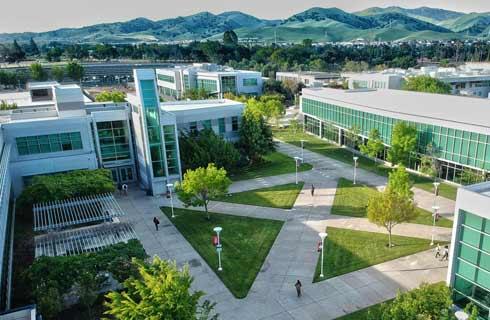- IDP China>
- 课程库>
- 工程与技术>
- 物理科学>
- 大气科学与气象>
- Doctor of Philosophy in Atmospheric and Oceanic Science - Remote Sensing
大气和海洋科学哲学博士-遥感
Doctor of Philosophy in Atmospheric and Oceanic Science - Remote Sensing

学历文凭
Ph.D.

专业院系
Department of Atmospheric and Oceanic Science

开学时间

课程时长

课程学费

国际学生入学条件
IDP—雅思考试联合主办方

雅思考试总分
7.0
了解更多
雅思考试指南
- 雅思总分:7
- 托福网考总分:96
- 托福笔试总分:160
- 其他语言考试:PTE - 68 overall (with 68 in writting)
CRICOS代码:
申请截止日期: 请与IDP顾问联系以获取详细信息。
课程简介
The Department of Atmospheric and Oceanic Science offers graduate study leading to the Master of Professional Studies, Master of Science, and Doctor of Philosophy degrees. Coursework in atmospheric and oceanic sciences is also offered at the upper division and graduate level as a service to other campus graduate programs. The educational program is broadly based and involves many applications of the mathematical, physical and applied sciences that characterize modern atmospheric sciences and physical oceanography, including climate and earth system science, and multidisciplinary studies of the interrelationship among the atmosphere, the oceans, the land, and the biota. The Department's advanced degree programs are designed to prepare students for participation in contemporary research in the atmospheric and oceanic science. Research specializations include: atmospheric dynamics, atmospheric chemistry, physical oceanography, air pollution, atmospheric radiative transfer, remote sensing of the atmosphere, ocean, and land, climate variability and change, data assimilation, numerical weather prediction, severe storms, surface-atmosphere, ocean-atmosphere and biosphere-atmosphere interactions, and earth system modeling. The curriculum includes a set of Core courses to provide a fundamental background in atmospheric and oceanic dynamics, physical meteorology and atmospheric chemistry, earth system science and climate, as well as advanced specialized courses. Supervised research using state-of-the-art facilities then prepares the students for future contributions in their chosen field.<br><br>The growth of satellite remote sensing since the 1960s revolutionized earth system studies, providing previously unimaginable global-scale observations. This stunning increase in observations has led to many advances including accurate numerical weather prediction, tracking of the polar ozone holes, and quantification of the rise of global sea level and the melting of the Greenland ice sheet. The earliest satellites in the 1960s and early 1970s only measured upwelling earth radiation in coarsely resolved spectral bands. Successive generations with improved stability, sensitivity, and spectral resolution have produced increasingly detailed information about the physical and chemical properties of the atmosphere. Active RADAR and LIDAR satellites have added additional capabilities to track a variety of hydrologic processes as well as the land and ocean surface. The revolution in remote sensing continues with innovations such as the Cyclone Global Navigation Satellite System (CYGNSS) computer tomography of the atmosphere, and the Gravity Recovery and Climate Experiment missions tracking time-dependent shifts in mass.
相关申请
 预科
预科 奖学金
奖学金 实习机会
实习机会 在校学习
在校学习 跨境学习
跨境学习 校园授课-线上开始
校园授课-线上开始 在线/远程学习
在线/远程学习
学校排名

世界排名91
数据源:泰晤士高等教育世界大学排名
关于马里兰大学帕克分校

马里兰大学帕克分校,是um系统的旗舰创始学校,成立于1862年。um—college park 也是全美大学联盟的61个盟校之一;与美国的其它名校,如uc-berkley、ucla、michigan—ann arbor或伊利诺大学—香槟分校都有合作教学的计划。地理位置优越,环境优良,在学术声望上也有全美前50的排名。由于马里兰大学帕克分校是一所州立大学,而且又有充足的研究经费与良好的学校声誉,它与民间的公私立机构建立了不错的互信关系。um总是不吝于提供马里兰州政府、地方性实验室、或各级学校机构它们的最新学术成果;而这些地方机构也都乐于提供um的学生可供研究的数据或任何工读机会。马里兰大学帕克分校也对不少非营利性机构提供协助,经过这几年的推行,已经有了不少丰硕的成果。马里兰大学学院市分校有八个图书馆,分别为McKeldin图书馆、McKeldin图书馆、艺术图书馆、建筑图书馆、工程与物理图书馆、Hornbake图书馆、表演艺术图书馆、Shady Grove图书馆与媒体中心、化学图书馆。 学校位于位于一个名为College Park的大学城之中,与美国首府华盛顿、文化中心巴尔地摩及州首府安纳玻里斯为邻,大学与他们之间的距离均在半个小时左右,整个城镇不但闹中取静,保存着浓厚的学术气氛之外;生活品质也有别于华盛顿特区的龙蛇杂处,享有非常好的治安。马里兰大学是世界最负盛名的综合性大学之一,也是美国最著名的公立研究型大学之一和美国大学联合会(Association of American University) 60名会员之一。作为马里兰州高等教育的典范和办学规模最大的学校,马里兰大学坚持以科研为特色,每个校区下设多个学院,授予本科、硕士、博士学位和各种技术职称。马里兰大学-帕克分校(Pepperdine University)在美国大学排名2012为第53名。
本校相关课程

Undergraduate Certificate in Women, Gender, and Sexuality Studies
学历文凭
Advanced Certificate
开学日期
课程费用总额


Bachelor of Arts in Theatre
学历文凭
Bachelor Degree
开学日期
课程费用总额


Bachelor of Arts in Studio Art
学历文凭
Bachelor Degree
开学日期
课程费用总额


Bachelor of Arts in Spanish
学历文凭
Bachelor Degree
开学日期
课程费用总额


Bachelor of Arts in Sociology
学历文凭
Bachelor Degree
开学日期
课程费用总额


Bachelor of Arts in Russian
学历文凭
Bachelor Degree
开学日期
课程费用总额

其他相关课程

气候变化硕士
 滑铁卢大学
滑铁卢大学学历文凭
Masters Degree
开学日期
课程费用总额


环境化学理学士(荣誉学位)
 女王大学
女王大学学历文凭
Bachelor Degree with Honours
开学日期
课程费用总额


环境科学硕士-气候变化影响评估
 多伦多大学
多伦多大学学历文凭
Masters Degree
开学日期
课程费用总额


气候学博士
 不列颠哥伦比亚大学
不列颠哥伦比亚大学学历文凭
Ph.D.
开学日期
课程费用总额


Bachelor of Science in Applied Climate Change and Adaptation
 爱德华王子岛大学
爱德华王子岛大学学历文凭
Bachelor Degree
开学日期
课程费用总额


Master of Arts in Climate Action Leadership
 皇家大学
皇家大学学历文凭
Masters Degree
开学日期
课程费用总额





















 美国
美国




